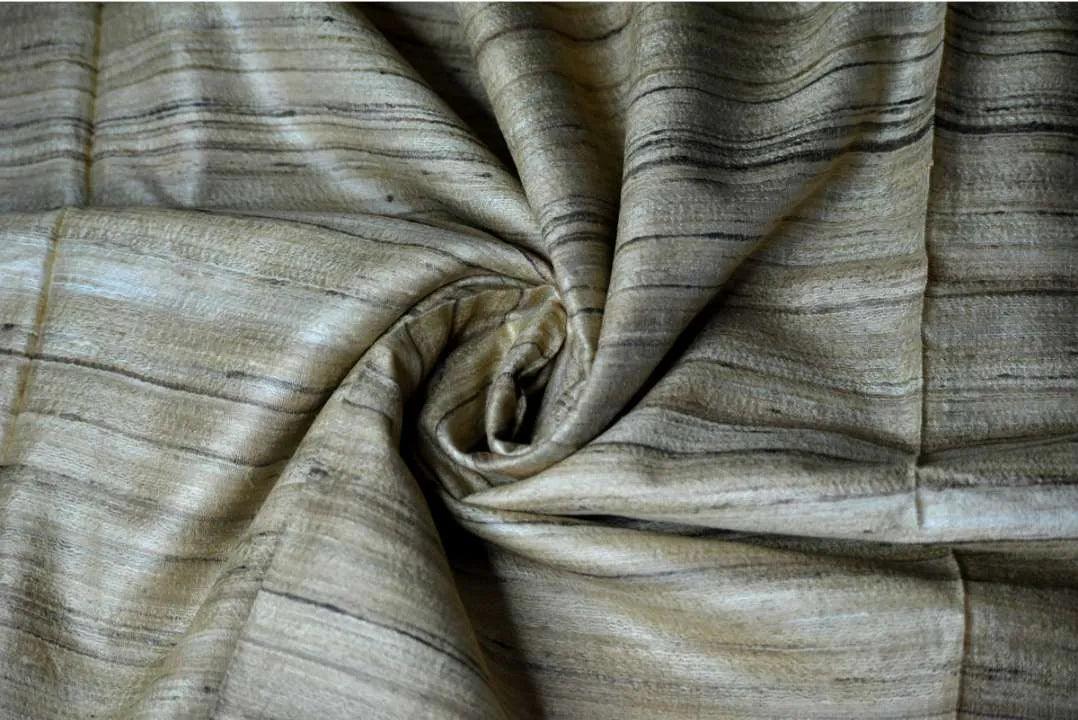Table of Contents
Known for their shiny, shimmering, and luxurious look, silks are frequently used to make traditional fancy clothing. Whether in sarees or suits, silk is always an excellent choice when one desires to appear royal and elegant.
There is only one drawback to using natural silks — it is made at the expense of many silkworm lives. As a result, there’s a new trend currently on the uptick, where the fabric used to craft dresses is ‘Peace Silk.’ What exactly is this Peace Silk, and how is it different from traditionally made silk?
What are Peace Silks?
Peace Silks or Ahimsa Silks are made without killing the silkworms responsible for creating the material. ‘Ahimsa’ is a Sanskrit word that translates to ‘Non-violence.’ Ahimsa Silk is becoming increasingly popular as people become aware of practices that don’t harm the worms.
It is also interesting to note that both Peace Silks and typical silks are extracted from the same silkworm species — Philosamia ricini. However, the extraction method for these silks is vastly different.
How the harvesting methods vary
Silk is traditionally extracted using the process of Sericulture. The finest quality silk in the market is made from the silkworm species Bombyx mori. These are domesticated silkworms that feed on Mulberry leaves. When the silkworm larvae spin the cocoon around themselves, the cocoons are taken and boiled/steamed. The filament secreted by the worm is then used for further processing to get silk. Sadly, the silkworm larvae die in the process.
Peace silks deviate from the traditional method in the initial steps. The main goal is to remove the larvae from the cocoons before processing them. The first method requires a bit of waiting. Harvesters let the larvae hatch into moths, so there’s no loss of life.
The second method takes much less time. Harvesters cut open the cocoons, remove the live pupae, and collect the filament. The fibers extracted through this method are shorter in length than traditional silk.
Types of Peace Silk
Tussar Silk: Made by silkworms that are part of the genus Antheraea. These silkworms are usually found in wild forests, commonly on Asan, Jamun, and Arjun trees. The cocoons are directly harvested and then taken to a temperature-regulated room where they are hung using jute strings. Once the silkworms metamorphize, the silk filament is then processed further.
Eri Silk: The worm Samia ricini produces these silks. They’re usually dense and coarse fibers, which makes for strong, stretchable, and durable material.
Muga Silk: Produced in Assam most commonly, Muga Silk is produced from the partially domesticated multivoltine silkworm, Antheraea asssamensis. The worms feed primarily on the plants of Som and Soalu. This makes the silk produced have glossier than usual texture and higher durability.
Noil Silk: These are the short fibers leftovers after combing/spinning the silk. Not directly useful for long sarees and suits, these silks come in handy for textures.
Why use Peace Silks?
Even though Peace Silks require a bit of effort, switching to Peace Silks might be your way.
- Peace Silks are not as smooth or stiff as traditional silks, but it’s the stuff that the best drapes are made of.
- The Peace Silk fabric is similar to a paler, softer variant of Tussar silk, coincidently also a form of Ahimsa Silk. These silks can make for dressing used all year, as they retain warmth and coolness.
- Ahimsa Silks are not compatible with the lines of Banarasi Sarees or Kanjivaram Sarees. Instead, Khadi and Linen Sarees are best made using these silks, and if you have an eye for the subtler tastes in traditional dressing, then Ahimsa Silks are the best for you.
Silk is one of the finest choices for designing traditional dresses. Peace Silk is the right choice for those who prefer a cleaner conscience and quality clothing. As time goes on, the practice of extracting silk filament the Ahimsa way will gain popularity. If you make the switch now, you’d be playing a part in making Ahimsa Silk and its harvesting practices more common.




